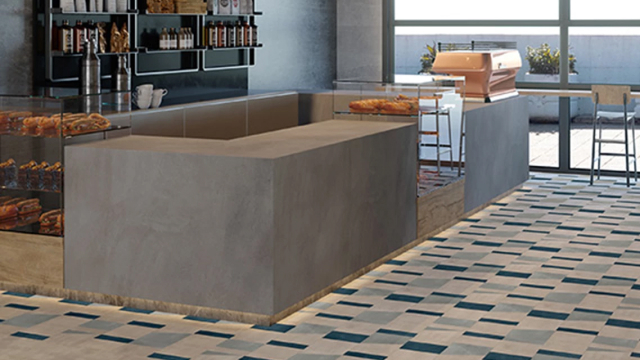As Seen In: FX Design Seminar - Life's Rich Pattern
Gathered together at Amtico’s offices in London, experts from across the design world discussed the importance of pattern and how it is executed, as part of the FX Design Seminar ‘Patterns – Trivial Pursuits or Essential Design?’

PATTERN is all around us, from the subtle flecks in the flooring we walk on to the distinctive prints on our clothes. So often a source of delight, it is often at the heart of what makes a design scheme memorable. But is there a fine line between pattern and fanciful decoration and ornament? How can pattern coexist harmoniously with brand identity? And at a time of climate emergency when every effort should be on designing form sustainability, can too much pattern hamper attempts to design with longevity?
Chair Theresa Dowling, editor of FX, kicked off the seminar by asking whether pattern is something that is integrally built into the design of a building or is something that is added later in the design process. She raised the questions of just how much importance can be attributed to pattern in our industry, against the backdrop of fashion, trends, and the historical context of pattern in products, textiles and architecture, raising the lasting images of Marimekko’s designs, Gehry’s architectural freeform pattern of Bilbao, Marks Bar eld’s mosque and the ‘Homemaker’ plate of yesteryear.

As pictured from the left; Theresa Dowling, Editor at FX, and Jane Lawrence, Head Of Interiors at Knight Dragon.
"Colour feels like it dates quickly, whereas a pattern doesn’t necessarily date if you’ve treated it well"
Justin Nicholls
Founding Director, Fathom Architects
It’s all in the mind - So what patterns are likely to have mass appeal and stand the test of time?
Naomi Buckley commented on how clients can become nervous if patterns look too full-on in case the effect is too stimulating. Angular patterns, said Amtico’s Lucy Paskell, can often be seen as the most scary and the least familiar. And what of neurodiversity, which is increasingly becoming part of the conversation as designers and their clients seek to create more inclusive environments?
This brings with it a greater awareness of how certain combinations of colours and forms of pattern can be problematic for some people. But there is also the question of whether this leads to designs being diluted during the design process –perhaps the answer was more choice of environment.

Lorna Williams, Head of Product Design and Visual Creation at Amtico.

Naomi Buckley, Director at TP Bennett.


